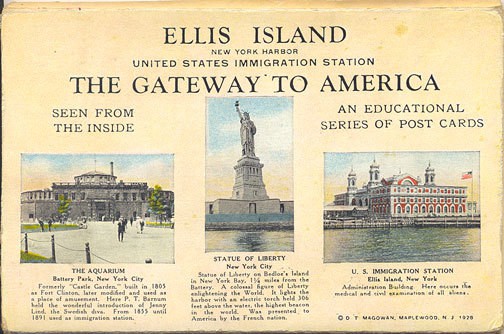 Lesson Study 1: Ellis Island and Angel Island Stations
Lesson Study 1: Ellis Island and Angel Island Stations
Although I was not able to do this lesson in my classroom, I do plan to use this project in the future. Rather than ask students to fill out a worksheet or write a summary, I felt that this sort of activity would be more fun for students to apply what they have learned about the topic, and show it off in a more creative way. I wanted to give students the opportunity to design their knowledge, and apply the content of this topic in way that best exemplified their understanding of it. When I shared this lesson with my peers, they liked the idea of students making a brochure to explain the journey, the process, and the environment at Ellis Island and Angel Island, compared to a common essay formal assessment. For myself, I want to provide projects such as these as an alternative form of assessing my students, because it gives them more autonomy and responsibility to their learning.
Content: Students will study the significance of Ellis Island and Angel Island during early U.S immigration, by identifying the symbolism that these stations held for immigrants, the environment at these immigration stations, and the protocol/process in which to enter the United States.
Process: Students will be required to read either individually or with a partner, two primary source letters: one written from an incoming immigrant at Ellis Island, and the other written by an incoming immigrant at Angel island. In class, students will read these letters once through, and then a second time, in which they will annotate or highlight anything they found confusing, interesting, or had questions about. Following the reading, I will lead a class discussion, where we will identify the tone of each writer, the focus of each writer, who is the writer’s audience, and his or her personal feelings and experience.
Product: Students will each create a travel brochure, describing the environment, people, and process of being admitted into the United at either Ellis Island or Angel Island. The audience of these brochures will be to individuals who are considering making the journey to the United States.
Evaluation: Students will be evaluated based on a rubric score for their brochure. The rubric will be based on a 1-4 scoring system (1: incomplete, 2: Needs Improvement, 3: Good, 4: Exceeds). On the rubric, students will be evaluated on the application of the content, creativity, and spelling and grammar.
What kinds of thinking will students need to do to participate in the lesson?
This activity will require students to perform a combination of higher-level thinking (Creating) and lower level thinking (applying and understanding). As students conduct this activity, they will be forced to reflect how they will want to present their knowledge, through the design of their brochure.
To what extent do students have options or choices regarding these lesson components?
In regards to the reading, students have the opportunity to identify sections in the text that grab their attention as either interesting, confusing, or have further questions on. Students then have the chance to share their thoughts and ideas of the text with the class. The product of this lesson gives students the freedom to design and organize what was taught, and apply the content in a way that exemplifies their understanding of it.
Photo Credit to http://www.postcardy.com/articleEllis.html
